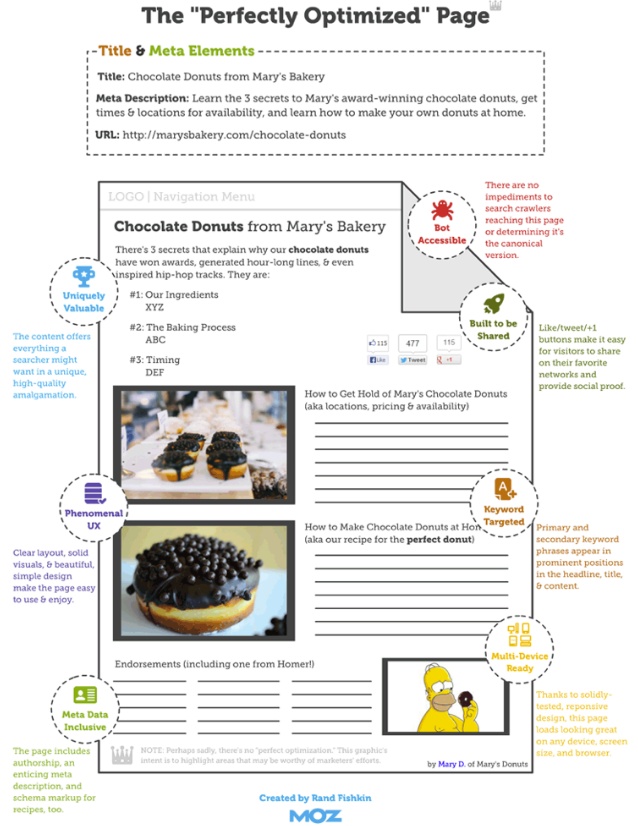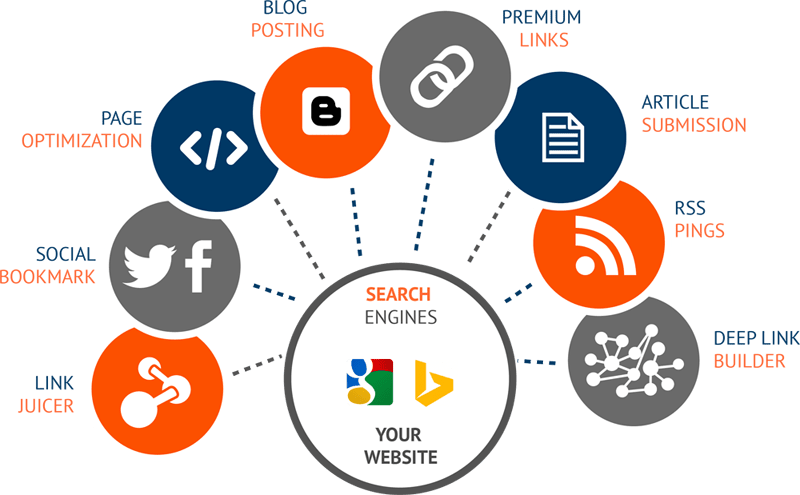At the outset, I must confess that this is an extremely tricky topic. I am still on a steep learning curve with SEO but I am happy to share what I have been able to understand till now. You will come across many who boast about knowing SEO in and out. But trust me, how it works is still an enigma. While I call SEO an enigma, I also cannot deny that fact that it is irreplaceable.
Consumers search for category/brand/product related information online and expect results in split seconds. They even want Google to read their minds. They expect Google to show them just the right thing at the right time.
As a Digital Marketer, it is your job to bridge the gap between your consumer’s expectations from Google and your brand’s presence in the Digital space.
SEO helps a brand website’s ranking improve in an organic way – meaning marketers do not need to spend money to improve the ranking. An SEO initiative drives inquisitive consumers or those with a high purchase intent for your website.
There are two ways to run SEO. On-page Optimization which you run on your own website and it remains completely under your control. Off-page Optimization happens when you publish rich content on various other platforms and link it to the relevant pages on your website. SEO is a vast and complicated topic. I have tried to list some of the key steps which can help you successfully implement it:
- Analyze the Keywords Searched – Simply put, these are actual words used by consumers in their searches. To identify keywords pertaining to your brand and the category you are in, it’s important to get into the shoes of the consumer.

The words you decide as your keywords, should be the ones that are most likely to be used by your consumers. It is important to have the most comprehensive list of possible keywords. The best way to list them is by segregating them under various themes like benefits, category, situations, signs, and symptoms, uses etc. After listing, shortlist the keywords basis the relevance to your website’s content (which obviously is complete and accurate with respect to your brand-related information) and volume of searches – the no. of times each of the listed keyword has been used by consumers. There are a lot of tools available for free to help you figure out keyword search volumes – some examples being Google, SEMrush - Develop a Well-designed Sitemap – As stated in my blog “First thing first” on building your website, a sitemap is the blueprint of your website basis which Google navigates and reads the content published therein. A well-designed sitemap is your path to successful SEO. After finalizing the keywords, reviewing your sitemap is crucial. It is important to note that Google ranks individual pages as well as the website. The Sitemap has a direct correlation with the site visits, if the crawlers1 are not able to navigate through the site, the pages or website will not get indexed, and as a result, the content will not get ranked in search engine’s results pages. So you can imagine the situation if your page is not ranked within a search results page.
- Things to Note: On-Page Optimization – After finalizing the sitemap you need to ensure that your chosen keywords are an integral part of your The following are the key yardsticks of a successful On-Page Optimization:
- Title Tag – Title is the headline you see when you search for a website. Please note it is not your page headline. Google is like the headmaster in the school of SEO and the headmaster knows when you cheat. So, do not add random keywords but build relevance of the same in the title tag(s). A CCP (cut-copy-paste) of keywords can lead to a poor ranking for your website.
- Meta Description (Meta-Tags) – If the Title Tag is the headline, I am sure you can guess what the Meta Tag would be. You are right – it is the body copy. The description shown below the title tag in the search results is called a meta-description. It briefly describes what the page contains. It is important to integrate CTAs in your website’s meta-tags (be cautious in limiting the use of action words) to induce some action/next steps for consumers. While getting a good rank for your website is the first task, it is equally important to get more people to visit the website. Well defined meta-tags can do this job.
- Image Tags/Alt-Tags – Images play a very important role in running SEO for the website. Well written image-tags (descriptions) positively influence the ranking. The best part is that the image description can include more keywords as the image description does not have any limitations with respect to relevance to the image.
- URL Structure – Check your URLs thoroughly before making any change to run an SEO initiative. If the current URLs explain what consumers should understand and expect from a page, then you do not necessarily need to change them. Though keyword inclusion is important, it is more important to stick to a URL which describes the page correctly. Ensure that URLs are simple to understand and compelling for search engines and consumers.

- Schema Markup – This is a tough one. The Schema is a description of the page, in brief, placed in the backend for Google to understand page content. It should ideally be done on the website during coding (HTML/development). It enables search engine crawlers1 to interpret the data and improve the ranking of the page.
- Content and Updates – This is not news. Content is the most important part of the website. While you should make sure that the content is easy to understand, relevant to search and intriguing to engage the consumers, also ensure that the content contains a high intensity of relevant keywords. Headmaster Google never punishes for having a low number of pages, short articles etc., but you will surely earn negative points for duplicate content (Google punishes those who try to be over-smart 😉). So, keep refreshing content, adding new topics, articles and images from time to time.
- Page Speed – The time needed by any web-page to fully load on the consumer’s browser is called Page Speed. A quick load time is not only important for a great consumer experience but also one of the key parameters used by Google to rank pages. Often, it is directly proportional to the bounce rate2. If a page takes too long to load, consumers tend to move to a different website. You can increase the page speed by optimizing the image sizes, improving the server response time and by minimizing the complex backend coding.
- Mobile Friendliness – As stated in my previous blog, you need to remember that a lot of searches now happen on a mobile device. You are doomed if the great work you have done on the desktop version of your website does not come alive on a handheld device. Some points to be considered while initiating Mobile friendly SEO:
- Page speed is more important for mobile users given connectivity issues. Minimizing images, codes etc. can help you improve the page speed of your mobile website
- Mobile friendly design for superior user experience
- Short titles, meta descriptions, and URLs (without losing the essence of the information)
- Things to Note: Off-page Optimization –
- Backlinks – Backlinks are links on one website that, when clicked, take the user to another site. As we know, the internet is nothing, but a network of the various portals interconnected like a web. It is important that your website, as a part of this complex network, has as many possible links directing consumer traffic towards it. There are various ways to back-link, but it is important to focus on some high-quality links directing to your website. The best way is through blog postings, PR articles, and social bookmarking. Curate content keeping in mind your target consumers, in this case, potential websites which can backlink to your website. Understand what kind of content they will be interested in and are likely to share. It is important to know the websites linking to yours to get rid of toxic links and analyze the links to follow or unfollow. There are various online tools available to know the websites blacklining your website like Buzzsumo, SEMrush etc.

- Social Media – I read somewhere Social Media Marketing and SEO are like friends with benefits. I am sure you know that the more your business is talked about, the better place it gets in the search results. Social Media Marketing is a great way to build a link. When you have a good follower base, there are high chances that your Social Media profiles/handles will show up in the search results when a consumer searches your brand.
- Company Listings (citation) – This one is extremely helpful in local SEO. List your business through Google’s “My Business” profile and on the other available platforms by sharing complete information about your offering, with images and other important details. By sharing complete information with regular updates, your website ranking is bound to improve.
- Backlinks – Backlinks are links on one website that, when clicked, take the user to another site. As we know, the internet is nothing, but a network of the various portals interconnected like a web. It is important that your website, as a part of this complex network, has as many possible links directing consumer traffic towards it. There are various ways to back-link, but it is important to focus on some high-quality links directing to your website. The best way is through blog postings, PR articles, and social bookmarking. Curate content keeping in mind your target consumers, in this case, potential websites which can backlink to your website. Understand what kind of content they will be interested in and are likely to share. It is important to know the websites linking to yours to get rid of toxic links and analyze the links to follow or unfollow. There are various online tools available to know the websites blacklining your website like Buzzsumo, SEMrush etc.
- Track progress and redo – Progress is all that matters. While you need to give time for SEO to work, it is also important to keep a check on it. A monthly check on the progress will help you optimize and improve. Track only the most important and relevant keywords to avoid confusion. Other than the keyword ranking you should also check website progress on the following parameters:
- Organic website traffic
- Page speed
- Time spent on each page
- Bounce rate
Please do not get into a loop of changing your SEO strategy every time you see the report. If there are no gross issues, my suggestion would be to let your optimization work for three to four months and then initiate the required corrective actions. I would want to repeat – allow time for SEO to work.
That is all on my understanding of SEO. I am sure you want to know more too about SEO. I would recommend you visit moz.com for detailed information and some cool tools as well.
With this, the “Owned” of PESO comes to an end for now. I will be now starting with “Paid”. In the next couple of blogs, I will shed light on the various paid promotions you can do in the Digital space to engage and enthrall your consumers.
I am super excited. Hope you are too…Stay tuned…
Just learning to blog on WordPress, some useful material here even for a blogger.
LikeLike